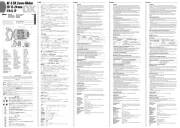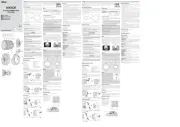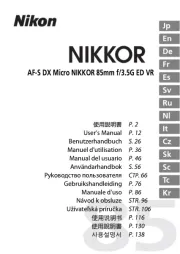Nikon Nikkor AF Fisheye-Nikkor 16mm f/2.8D Handleiding
Bekijk gratis de handleiding van Nikon Nikkor AF Fisheye-Nikkor 16mm f/2.8D (4 pagina’s), behorend tot de categorie Lens. Deze gids werd als nuttig beoordeeld door 44 mensen en kreeg gemiddeld 3.7 sterren uit 22.5 reviews. Heb je een vraag over Nikon Nikkor AF Fisheye-Nikkor 16mm f/2.8D of wil je andere gebruikers van dit product iets vragen? Stel een vraag
Pagina 1/4

中文版(简体)
Printed in Japan
SB5C02(27)
7MAA4727-02
■
景深 (
m
)
对焦距离 景深 复制比率
2.8
2.8
2.8
2.82.8 4
4
4
445.6
5.6
5.6
5.65.6 8
8
8
8811
11
11
1111 16
16
16
1616 22
22
22
2222
0.25
0.25
0.25
0.25
0.25 0.243 – 0.258 0.24 – 0.262 0.236 – 0.267 0.23 – 0.276 0.224 – 0.288 0.215 – 0.312 0.206 – 0.35 1/10
1/10
1/10
1/101/10
0.3
0.3
0.3
0.3
0.3 0.287 – 0.315 0.281 – 0.323 0.275 – 0.333 0.266 – 0.351 0.256 – 0.377 0.241 – 0.434 0.227 – 0.543 1/14
1/14
1/14
1/141/14
0.4
0.4
0.4
0.4
0.4 0.37 – 0.437 0.359 – 0.456 0.346 – 0.484 0.328 – 0.536 0.308 – 0.623 0.283 – 0.882 0.259 – 1.988 1/20
1/20
1/20
1/201/20
0.5
0.5
0.5
0.5
0.5 0.448 – 0.569 0.43 – 0.607 0.408 – 0.667 0.38 – 0.789 0.351 – 1.04 0.314 – 2.45 0.282 – ∞ 1/26
1/26
1/26
1/261/26
0.7
0.7
0.7
0.7
0.7 0.59 – 0.873 0.554 – 0.981 0.513 – 1.183 0.464 – 1.742 0.416 – 4.678 0.359 – ∞ 0.313 – ∞ 1/39
1/39
1/39
1/391/39
1
1
1
1
10.772 – 1.46 0.705 – 1.83 0.635 – 2.85 0.555 – 21.01 0.482 – ∞ 0.402 – ∞ 0.34 – ∞ 1/58
1/58
1/58
1/581/58
∞
∞
∞
∞
∞2.72 – ∞ 1.93 – ∞ 1.4 – ∞ 1.01 – ∞ 0.76 – ∞ 0.55 – ∞ 0.42– ∞ 1/∞
1/∞
1/∞
1/∞1/∞
感谢您选购尼康产品。该 AF鱼眼尼克尔16 mm f /2.8D 镜头可为照相机机身提供距离
信息以进行即时 3D矩阵测光或 3D多传感器均衡补充闪光的闪光控制。它具有18 0°
对角线视角以获取真实的鱼眼效果,但是与其他尼克尔鱼眼镜头不同,它被设计为一
款能够拍摄出充满整个画面图像的镜头,其效果类似于常规镜头。除了供平常使用的
L37C UV滤镜外,它还随附 O56
、A2和B2镜后卡口型滤镜(因具备卡口,滤镜可快
速安装和取下)。在使用本产品前,请仔细阅读这些指南和照相机说明书,以便您在现
在和今后都能充分利用您的镜头。
使用产品前请仔细阅读本使用说明书。
安全须知
请在使用前仔细阅读“安全须知”,并以正确的方法使用。本“安全须知”中记载了重
要的内容,可使您能够安全、正确地使用产品,并预防对您或他人造成人身伤害或财
产损失。请在阅读之后妥善保管,以便本产品的所有使用者可以随时查阅。
有关指示
本节中标注的指示和含义如下。
A警告
表示若不遵守该项指示或操作不当,则有可能造成人员死亡或负重伤的内容。
A注意 表示若不遵守该项指示或操作不当,则有可能造成人员伤害、以及有可能
造成物品损害的内容。
本节使用以下图示和符号对必须遵守的内容作分类和说明。
图示和符号的实例
IL符号表示唤起注意(包括警告)的内容。
在图示中或图示附近标有具体的注意内容(左图之例为当心触电)。
EF符号表示禁止(不允许进行的)的行为。
在图示中或图示附近标有具体的禁止内容(左图之例为禁止拆解)。
KD符号表示强制执行(必需进行)的行为。
在图示中或图示附近标有具体的强制执行内容(左图之例为取出电池)。
A警告
E禁止拆解
切勿自行拆解、修理或改装。 否则将会造成触电、发生故障并导致受伤。
G
C
禁止触碰
立即委托修理
当产品由于跌落而破损使得内部外露时,切勿用手触碰外露部分。
否则将会造成触电、或由于破损部分而导致受伤。取出照相机电
池,并委托经销商或尼康授权的维修服务中心进行修理。
K
C
取出电池
立即委托修理
当发现产品变热、冒烟或发出焦味等异常时,请立刻取出照相机电池。
若在此情况下继续使用,将会导致火灾或灼伤。取出电池时,请小心勿
被烫伤。取出电池,并委托经销商或尼康授权的维修服务中心进行修理。
J禁止接触水
切勿浸入水中或接触到水,或被雨水淋湿。
否则将会导致起火或触电。
F禁止使用 切勿在有可能起火、爆炸的场所使用。
在有丙烷气、汽油、可燃性
喷雾剂等易燃性气体、粉尘的场所使用产品,将会导致爆炸或火灾。
F禁止观看 切勿用镜头或照相机直接观看太阳或强光。
否则将会导致失明或视觉损伤。
A注意
I当心触电 切勿用湿手触碰。 否则将有可能导致触电。
F禁止放置 切勿在婴幼儿伸手可及之处保管产品。 否则将有可能导致受伤。
A小心使用 进行逆光拍摄时,务必使太阳充分偏离视角。
阳光会在照相机内部
聚焦,并有可能导致火灾。
太阳偏离视角的距离微小时,也有可能会导致火灾。
A妥善保存 不使用时请盖上镜头盖,或保存在没有阳光照射处。
阳光会聚焦,并有可能导致火灾。
A小心移动 进行移动时,切勿将照相机或镜头安装在三脚架上。
摔倒、碰撞时将有可能导致受伤。
F禁止放置 切勿放置于封闭的车辆中、直射阳光下或其它异常高温之处。
否则将对内部零件造成不良影响,并导致火灾。
■
镜头部件
q
镜头镜筒
w
最小光圈锁定杆
e
镜头遮光罩
r
对焦距离指示
t
焦距 /光圈 /镜头安装标记
y
红外线补偿标记(白色)
u
对焦距离指示窗口
i
对焦环
o
光圈刻度
!0
光圈传递杆
!1
光圈直读刻度
!2 CPU接点
!3 景深指示
!4 测光耦合脊
!5 光圈环
■
注意事项
• 请保持 CPU镜头接点清洁并小心不要损坏CPU接点。
• 不要将以下配件直接安装至本镜头:
PK-
1或PK-
11自动延伸环、K1环或BR-4自动环
(
PK-11A和BR-8可分别代替PK-11和BR-4使用)。若不遵守此注意事项,可能会导致
损坏本镜头的CPU接点或其他部件。其他镜头配件可能与照相机不兼容;请务必在
使用前先查阅照相机的说明书。
• 本镜头无法与用于尼康F3AF照相机的DX-1取景器一起使用。
■
对焦
自动对焦适用于尼康自动对焦照相机 ;若要手动对焦,请旋转对焦环直至取景器中的
图像清楚鲜明。
■
对焦屏
“对焦屏”表格中所列照相机支持用于不同镜头或不同情况下的多种对焦屏。表格中所
列对焦屏均适用于本镜头。
当将B2/B3
、E2/E3或K2/K3对焦屏用于非此表格中所列照相机时,请分别参考B
、
E
或K列。
对焦屏
照相机
EC-B/
EC-B/
EC-B/
EC-B/EC-B/
EC-E
EC-E
EC-E
EC-EEC-E
A/L
A/L
A/L
A/LA/L B
B
B
BBC
C
C
CCD
D
D
DDE
E
E
EEG1
G1
G1
G1G1 G2
G2
G2
G2G2
G3
G3
G3
G3G3 G4
G4
G4
G4G4
H1
H1
H1
H1H1 H2
H2
H2
H2H2
H3
H3
H3
H3H3 H4
H4
H4
H4H4
J
J
J
JJK
K
K
KKP
P
P
PPM
M
M
MMR
R
R
RRT
T
T
TTU
U
U
UUF
F
F
FF
F6
F5+ DP-30
F5+ DA-30
(+0.5)
(+0.5)
(+0.5)
(-1)
(+0.5)
F4+ DP-20/
F4+ DA-20
(-1)
(-1)
F3
:
推荐使用。
:
在取景器中可见渐晕(照片不会受到影响)。
:
分屏显示不会提高对焦准确度。
( ):
括号中的数据是指用于中央重点测光的曝光补偿值。当调整 F6的曝光
补偿时,请在自定义设定 b6
(“对焦屏补偿”)中选择“其他对焦屏”;请
注意,使用 B或E以外的对焦屏时,即使曝光补偿值为0,也必须选择
“其他对焦屏”。
F5 和F4的用户可分别使用自定义设定18和对焦屏曝光
补偿拨盘调整曝光补偿;有关详细信息,请参阅照相机的说明书。
空白单元格:
不适用于本镜头。请注意,在放大倍率为1:1或更高时,
M型对焦屏仍可
用于显微拍摄和微距拍摄。
■
滤镜
本镜头随附 4种滤镜:
L37
C(
UV滤镜)、A2
、B2和O56
。任何时候都必须安装有滤
镜;请根据拍摄环境选择滤镜。由于具备卡口,因此更换这些镜后卡口型滤镜变得轻
而易举。
■
更换滤镜
1 逆时针旋转当前滤镜并将其取下。
2 将替换滤镜安放在镜头上,同时保持其外部边缘的点与镜头卡口安装销旁的导槽
对齐,然后顺时针旋转滤镜。
■
非TTL 测光
使用镜后(TTL
)测光时不需要曝光补偿,因为照相机会根据穿过镜头的光线量测定
曝光。当使用不提供 TTL 测光的照相机时,请如下表所示调整曝光。括号中的数据指
的是以f档为单位的曝光补偿。
胶卷 滤镜 滤光系数(曝光补偿)
名称 类型 日光 白炽灯灯光
黑白/彩色 L37C紫外 1 1
仅彩色 A2 淡琥珀色 1.2 (⁄) 1.2 (⁄)
B2 淡蓝色 1.2 (⁄) 1.2 (⁄)
仅黑白 O56 橙色 3.5 (1
⁄)2 (1
)
■
最小光圈锁定杆(图 A
)
在程序自动或快门优先自动模式下进行拍摄时将光圈锁定为 f/22
。
1
. 将光圈环旋转至最小光圈设定(
f/22
)。
2. 朝光圈环滑动锁定杆,以便锁定杆上的白点与橙点对齐。
若要解除锁定,请按相反方向滑动锁定杆。
■
构图(图B
)
与常规镜头相比,使用鱼眼镜头构图时需要花费更多的精力和考虑。鱼眼镜头不仅会
由于它的宽视角而容易产生失真,还会将物体挤压进一个受限的区域:靠近中央的物
体比边缘的物体显得更大且失真更少。整个场景变得更为深远,空间关系也发生变化,
只需稍微改变照相机的位置即可产生全新的构图。您需特别注意避免不相干的物体
(如三脚架的支脚或拍摄者的手和脚等)出现在画面中。
■
镜头保养
• 用吹气球去除镜头表面的灰尘和浮屑。若要去除污点和指纹,可使用一块滴有少许
乙醇或镜头清洁剂的干净软棉布或镜头清洁纸,以圆周运动方式从里向外进行清洁。
注意不要留下污渍,也不要用手指触碰玻璃。
• 切勿使用涂料稀释剂或苯等有机溶剂清洁镜头。
• 不使用镜头时,请盖上镜头前后盖。
• 保持镜头干燥。内部构造生锈将导致无法挽回的损坏。
• 若在较长时间内不使用镜头,请将其存放在阴凉干燥的地方以防止发霉和生锈。切
不可存放在直射阳光下,也不可与石脑油或樟脑丸一起存放。
• 将镜头放置在过于炎热的地方将会使强化塑料部件受损或变形。
• 运输产品时,请在包装箱内装入足够多的缓冲材料,以减少(避免)由于冲击导致产
品损坏。
■
兼容的配件
• 半软镜头袋 CL-0715
■
技术规格
焦距 16mm
最大光圈 f/2.8
镜头结构 5组8片
视角 180°
对焦距离指示 从0.25m至无穷远(∞),以米和英尺为单位
距离信息 输出到照相机
光圈刻度 标准和光圈直读刻度上均为 f/2.8至f/22
光圈 全自动
测光 全开光圈测光
卡口 尼康F卡口
滤镜 L37C
、O56
、A2和B2
(镜后卡口型)
尺寸 约63mm
(最大直径)×
57mm
(从照相机镜头卡口边缘开始的距离);
总体长度约为68mm
重量 约290g
尼康公司保留可随时更改说明书内载之硬件技术规格的权利,而无须事先通知。
■
关于广角和超广角镜头的注解
下列情况下若使用广角和超广角镜头,自动对焦可能无法达到预期效果 :
1 拍摄对象未填满对焦包围中的区域(图C
)。
若对焦点包含前景和背景两者中的物体,照相机可能对焦于背景,从而使拍摄对象
不清晰。
2 拍摄对象包含很多细节性景物(图D
)。
照相机可能难以对焦于包含很多细节性景物或缺少对比度的拍摄对象。
在这些情况下,请使用手动对焦,或使用对焦锁定对焦于相同距离的其他拍摄对象后
再重新构图。有关详细信息,请参阅照相机说明书中的“利用自动对焦获取良好拍摄
效果”。
图A图B
图C
与背景有一段距离的较远人物拍摄
对象
图D
一片开满鲜花的田地
Sc
使用说明书
随附配件
插入式镜头前盖
镜头后盖
卡口型滤镜(L37C
、
A2
、B2 和O56)
滤镜套 CA-2
AF Fisheye-Nikkor 16mm f/2.8D
En
User’s Manual
Supplied Accessories
Supplied Accessories
Supplied Accessories
Supplied AccessoriesSupplied Accessories
Slip-on front lens cap
Rear lens cap
Bayonet-type fi lters (L37C, A2, B2, and O56)
Filter Case CA-2
产品中有害物质的名称及含量
标志 部件名称
有害物质
铅
(Pb)
汞
(Hg)
镉
(Cd)
六价铬
(Cr (VI))
多溴联苯
(PBB)
多溴二苯醚
(PBDE)
外壳 ○ ○ ○ ○ ○ ○
机械元件 × ○ ○ ○ ○ ○
光学元件 ○ ○ ○ ○ ○ ○
电子元件 × ○ ○ ○ ○ ○
本表格依据SJ/T11364的规定编制。
○ : 表示该有害物质在该部件所有均质材料中的含量均在GB/T26572规定的限量
要求以下。
× : 表示该有害物质至少在该部件的某一均质材料中的含量超出GB/T26572规定
的限量要求。但是,以现有的技术条件要使照相机相关产品完全不含有上述有
害物质极为困难,并且上述产品都包含在《关于电气电子设备中特定有含物质
使用限制指令2011/65/EU》的豁免范围之内。
进口商:
尼康映像仪器销售(中国)有限公司
((上海市茂名南路205号瑞金大厦22楼,
200020
)
尼康客户支持中心服务热线:
400-820-16 6 5
(周一至周日9 : 00 – 18 : 00
,除夕下午休息)
http://www.nikon.com.cn/
在日本印刷
出版日期:
2015年3月1日


© 1993 Nikon Corporation
English
■
■
■
■■
Depth of Field (Metric)
Depth of Field (Metric)
Depth of Field (Metric)
Depth of Field (Metric)
Depth of Field (Metric)
(m)
Focus
Focus
Focus
Focus Focus
distance
distance
distance
distancedistance
Depth of
Depth of
Depth of
Depth of
eld
eld
eld
eld Depth of eld Reproduction
Reproduction
Reproduction
Reproduction Reproduction
ratio
ratio
ratio
ratioratio
2.8
2.8
2.8
2.82.8 4
4
4
445.6
5.6
5.6
5.65.6 8
8
8
8811
11
11
1111 16
16
16
1616 22
22
22
2222
0.25
0.25
0.25
0.25
0.25 0.243 – 0.258 0.24 – 0.262 0.236 – 0.267 0.23 – 0.276 0.224 – 0.288 0.215 – 0.312 0.206 – 0.35 1/10
1/10
1/10
1/101/10
0.3
0.3
0.3
0.3
0.3 0.287 – 0.315 0.281 – 0.323 0.275 – 0.333 0.266 – 0.351 0.256 – 0.377 0.241 – 0.434 0.227 – 0.543 1/14
1/14
1/14
1/141/14
0.4
0.4
0.4
0.4
0.4 0.37 – 0.437 0.359 – 0.456 0.346 – 0.484 0.328 – 0.536 0.308 – 0.623 0.283 – 0.882 0.259 – 1.988 1/20
1/20
1/20
1/201/20
0.5
0.5
0.5
0.5
0.5 0.448 – 0.569 0.43 – 0.607 0.408 – 0.667 0.38 – 0.789 0.351 – 1.04 0.314 – 2.45 0.282 – ∞ 1/26
1/26
1/26
1/261/26
0.7
0.7
0.7
0.7
0.7 0.59 – 0.873 0.554 – 0.981 0.513 – 1.183 0.464 – 1.742 0.416 – 4.678 0.359 – ∞ 0.313 – ∞ 1/39
1/39
1/39
1/391/39
1
1
1
1
10.772 – 1.46 0.705 – 1.83 0.635 – 2.85 0.555 – 21.01 0.482 – ∞ 0.402 – ∞ 0.34 – ∞ 1/58
1/58
1/58
1/581/58
∞
∞
∞
∞
∞2.72 – ∞ 1.93 – ∞ 1.4 – ∞ 1.01 – ∞ 0.76 – ∞ 0.55 – ∞ 0.42– ∞ 1/∞
1/∞
1/∞
1/∞1/∞
Thank you for purchasing a Nikon product. The AF Fisheye-Nikkor 16 mm f/2.8D lens supplies dis-
tance information to the camera body for instantaneous 3D matrix metering or 3D multi-sensor
balanced ll- ash ash control. It has a 180° diagonal angle of view for a true sheye e ect, but,
unlike other Nikkor sheye lenses, it is designed to produce images that ll the entire frame, just
like those produced by conventional lenses. In addition to an L37C UV lter for normal use, it
comes with O56, A2, and B2 rear-mounted lters that can be quickly swapped in and out thanks
to their bayonet mounts. Before using this product, please carefully read both these instructions
and the camera manual so you get the maximum value from your lens now and for years to come.
■
■
■
■■
For
For
For
For Y
Y
Y
Your Safety
our Safety
our Safety
our Safety For Your Safety
A
A
A
AACAUTIONS
CAUTIONS
CAUTIONS
CAUTIONSCAUTIONS
• Do not disassemble. Touching the internal parts of the camera or lens could result in injury. In the event of
malfunction, the product should be repaired only by a qualifi ed technician. Should the product break
open as the result of a fall or other accident, remove the camera battery and/or disconnect the AC adapter
and then take the product to a Nikon-authorized service center for inspection.
• Turn the camera o immediately in the event of malfunction. Should you notice smoke or an unusual smell com-
ing from the equipment, immediately unplug the AC adapter and remove the camera battery, taking care
to avoid burns. Continued operation could result in fi re or injury. After removing or disconnecting the
power source, take the equipment to a Nikon-authorized service center for inspection.
• Do not use in the presence of ammable gas. Operating electronic equipment in the presence of fl ammable gas
could result in explosion or fi re.
• Do not look at the sun through the lens or the camera view nder. Viewing the sun or other bright light source
through the lens or viewfi nder could cause permanent visual impairment.
• Keep out of reach of children. Particular care should be taken to prevent infants from putting the batteries or
other small parts into their mouths.
• Observe the following precautions when handling the lens and camera:
-Keep the lens and camera dry. Failure to observe this precaution could result in fi re or electric shock.
-Do not handle the lens or camera with wet hands. Failure to observe this precaution could result in
electric shock.
-Keep the sun well out of the frame when shooting backlit subjects. Sunlight focused into the camera
when the sun is in or close to the frame could cause a fi re.
-If the lens will not be used for an extended period, attach the front and rear lens caps and store the lens
out of direct sunlight. If left in direct sunlight, the lens could focus the sun’s rays onto fl ammable objects,
causing fi re.
■
■
■
■■
Parts of the Lens
Parts of the Lens
Parts of the Lens
Parts of the Lens Parts of the Lens
q Lens barrel
w Minimum aperture lock lever
e Lens hood
r Focus distance indicator
t Focal length/aperture/mounting index
y Infrared compensation index (white)
u Focus distance indicator window
i Focus ring
o Aperture scale
!0 Aperture indexing post
!1 Aperture-direct-readout scale
!2 CPU contacts
!3 Depth-of- eld indicators
!4 Meter coupling ridge
!5 Aperture ring
■
■
■
■■
Notices
Notices
Notices
Notices Notices
• Keep the CPU lens contacts clean and be careful not damage the CPU contacts.
• Do not attach the following accessories directly to the lens: PK-1 or PK-11 auto extension rings, K1 rings,
or BR-4 auto rings (the PK-11A and BR-8 can be used in place of the PK-11 and BR-4, respectively). Failure
to observe this precaution will result in damage to the CPU contacts or other parts of the lens. Other lens
accessories may not be compatible with the camera; be sure to consult the camera manual before use.
• The lens can not be used with the DX-1 viewfi nder for Nikon F3AF cameras.
■
■
■
■■
Focus
Focus
Focus
Focus Focus
Autofocus is available with Nikon autofocus cameras; to focus manually, rotate the focus ring until
the image in the view nder is clearly de ned.
■
■
■
■■
Focusing Screens
Focusing Screens
Focusing Screens
Focusing Screens
Focusing Screens
The cameras listed in the “Focusing Screens” table support a variety of focusing screens for use
with di erent lenses or in di erent situations. The screens listed in the table are suited for use with
this lens.
When using B2/B3, E2/E3, or K2/K3 screens with cameras not listed in this table, refer respectively
to columns B, E, or K.
Screen
Screen
Screen
ScreenScreen
Camera
Camera
Camera
CameraCamera
EC-B/
EC-B/
EC-B/
EC-B/EC-B/
EC-E
EC-E
EC-E
EC-EEC-E A/L
A/L
A/L
A/LA/L B
B
B
BBC
C
C
CCD
D
D
DDE
E
E
EEG1
G1
G1
G1G1 G2
G2
G2
G2G2 G3
G3
G3
G3G3 G4
G4
G4
G4G4 H1
H1
H1
H1H1
F6
F5+ DP-30
F5+ DA-30
(+0.5)
(+0.5)
(+0.5)
(-1)
F4+ DP-20/F4+ DA-20
(-1)
(-1)
F3
Screen
Screen
Screen
ScreenScreen
Camera
Camera
Camera
CameraCamera H2
H2
H2
H2H2 H3
H3
H3
H3H3 H4
H4
H4
H4H4 J
J
J
JJK
K
K
KKP
P
P
PPM
M
M
MMR
R
R
RRT
T
T
TTU
U
U
UUF
F
F
FF
F6
F5+ DP-30
F5+ DA-30
(+0.5)
F4+ DP-20/F4+ DA-20
F3
: Recommended.
: Vignetting visible in viewfi nder (photographs are not aff ected).
: Split-screen display does not improve focus accuracy.
( ): Figures in parentheses give the exposure compensation for center-weighted metering. Select
“Other screen” for Custom Setting b6 (“Screen comp.”) when adjusting exposure compensation
for the F6; note that with screens other than B or E, “Other screen” must be selected even when the
value for exposure compensation is 0. Users of the F5 and F4 can adjust exposure compensation
using Custom Setting 18 or the focusing screen exposure compensation dial, respectively; see the
camera manual for details.
Empty cell: Not suited to use with this lens. Note that type M screens can however be used for photomicrog-
raphy and macro photography at magnifi cations of 1 : 1 or higher.
■
■
■
■■
Filters
Filters
Filters
FiltersFilters
The lens is supplied with four lters: the L37C (a UV lter), A2,B2, and O56. A lter must be attached
at all times; choose a lter according to shooting conditions. Thanks to their bayonet mounts,
exchanging these rear-mounted lters is a snap.
■
■
■
■■
Exchanging F
Exchanging F
Exchanging F
Exchanging Filters
ilters
ilters
ilters Exchanging Filters
1 Rotate the current lter counterclockwise and remove it.
2 Place the replacement lter on the lens, keeping the dot on its outside rim aligned with
the grove next to the mounting pin on the lens bayonet mount, and then rotate the lter
clockwise.
■
■
■
■■
Non-
Non-
Non-
Non-T
T
T
TTL Metering
TL Metering
TL Metering
TL Metering Non-TTL Metering
No exposure compensation is required with through-the-lens (TTL) metering, as the camera me-
ters exposure based on the amount of light passing through the lens. When using cameras that
do not o er TTL metering, adjust exposure as shown in the table below. Figures in parentheses
indicate the exposure compensation in f/stops.
Film
Film
Film
FilmFilm Filter
Filter
Filter
Filter Filter Filter factor (exposure compensation)
Filter factor (exposure compensation)
Filter factor (exposure compensation)
Filter factor (exposure compensation)Filter factor (exposure compensation)
Name
Name
Name
NameName Type
Type
Type
TypeType Sunlight
Sunlight
Sunlight
SunlightSunlight Incandescent lighting
Incandescent lighting
Incandescent lighting
Incandescent lightingIncandescent lighting
Black-and-white/color L37C Ultraviolet 1 1
Color only A2 Light amber 1.2 (⁄) ⁄)1.2 (
B2 Light blue 1.2 (⁄) ⁄)1.2 (
Black-and-white only O56 Orange 3.5 (1⁄) )2 (1
■
■
■
■■
The Minimum Aperture Lock Lev
The Minimum Aperture Lock Lev
The Minimum Aperture Lock Lev
The Minimum Aperture Lock Lever (Figure A
er (Figure A
er (Figure A
er (Figure A)
)
)
) The Minimum Aperture Lock Lever (Figure A)
Lock aperture at f/22 when shooting in programmed auto or shutter-priority auto mode.
1. Rotate the aperture ring to the minimum aperture setting (f/22).
2. Slide the lock lever toward the aperture ring so that the white dot on the lock lever aligns
with the orange dot.
To release the lock, slide the lever in the opposite direction.
■
■
■
■■
Composition (F
Composition (F
Composition (F
Composition (Figure B)
igure B)
igure B)
igure B)
Composition (Figure B)
Framing shots with a sheye lens requires even more planning and thought than would be need-
ed with a conventional lens. Not only are sheye lenses prone to distortion due to their wide
angle of view, but they also squeeze objects to t in a limited area: objects near center are larger
and less distorted than those at the edges. The entire eld is pushed into the distance and spa-
tial relations are transformed, with whole new compositions revealed by the slightest change in
camera position. Care is required to prevent extraneous objects, such as the legs of a tripod or the
photographer’s hands and feet, appearing in the frame.
■
■
■
■■
Lens Care
Lens Care
Lens Care
Lens Care Lens Care
• Use a blower to remove dust and lint from the lens surfaces. To remove smudges and fi ngerprints, apply
a small amount of ethanol or lens cleaner to a soft, clean cotton cloth or lens-cleaning tissue and clean
from the center outwards using a circular motion, taking care not to leave smears or touch the glass with
your fi ngers.
• Never use organic solvents such as paint thinner or benzene to clean the lens.
• Attach the front and rear caps when the lens is not in use.
• Keep the lens dry. Rusting of the internal mechanism can cause irreparable damage.
• If the lens will not be used for an extended period, store it in a cool, dry location to prevent mold and rust.
Do not store in direct sunlight or with naphtha or camphor moth balls.
• Leaving the lens in extremely hot locations could damage or warp parts made from reinforced plastic.
■
■
■
■■
Compa
Compa
Compa
Compatible Acc
tible Acc
tible Acc
tible Accessories
essories
essories
essories Compatible Accessories
• Flexible Lens Pouch CL-0715
■
■
■
■■
Specifi
Specifi
Specifi
Specifi
cations
cations
cations
cations Specifi cations
Focal length
Focal length
Focal length
Focal length
Focal length 16 mm
Maximum aperture
Maximum aperture
Maximum aperture
Maximum aperture
Maximum aperture f/2.8
Lens construction
Lens construction
Lens construction
Lens construction
Lens construction 8 elements in 5 groups
Angle of view
Angle of view
Angle of view
Angle of view
Angle of view 180°
Focus distance indicator
Focus distance indicator
Focus distance indicator
Focus distance indicator
Focus distance indicator Graduated in meters and feet from 0.25 m (1 ft) to infi nity (∞)
Distance information
Distance information
Distance information
Distance information
Distance information Output into camera
Aperture sc
Aperture sc
Aperture sc
Aperture scale
ale
ale
ale
Aperture scale f/2.8 to f/22 on both standard and aperture-direct readout scales
Diaphragm
Diaphragm
Diaphragm
Diaphragm
Diaphragm Fully automatic
Metering
Metering
Metering
Metering
Metering Full aperture
Mount
Mount
Mount
Mount
Mount Nikon F mount
Filters
Filters
Filters
Filters
Filters L37C, O56, A2 and B2 (rear-mount bayonet-type)
Dimensions
Dimensions
Dimensions
Dimensions
Dimensions Approx. 63 mm (maximum diameter) × 57 mm (distance from camera lens
mount fl ange); overall length is approx. 68 mm
Weight
Weight
Weight
Weight
Weight Approx. 290 g (10.2 oz)
Nikon reserves the right to change the specifi cations of the hardware described in this manual at any time and
without prior notice.
■
■
■
■■
A Note on
A Note on
A Note on
A Note on W
W
W
Wide
ide
ide
ide- and Super
- and Super
- and Super
- and Super W
W
W
Wide
ide
ide
ide-Angle Lenses
-Angle Lenses
-Angle Lenses
-Angle Lenses A Note on Wide- and Super Wide-Angle Lenses
Autofocus may not provide the desired results with wide- and super wide-angle lenses in the
following situations:
1 The subject does not ll the area enclosed by the focus brackets (Figure C).
If the focus point contains both foreground and background objects, the camera may focus on
the background and the subject may be out of focus.
2 The subject contains many ne details (Figure D).
The camera may have di culty focusing on subjects that contain many ne details or that are
lacking in contrast.
In these cases, use manual focus, or use focus lock to focus on another subject at the same dis-
tance and then recompose the photograph. For more information, see “Getting Good Results with
Autofocus” in the camera manual.
Figure A Figure B
Figure C
A far-off portrait subject at some
distance from the background
Figure D
A field of flowers
■
■
■
■■
Depth of Field (Imperial)
Depth of Field (Imperial)
Depth of Field (Imperial)
Depth of Field (Imperial)
Depth of Field (Imperial)
(ft)
Focus
Focus
Focus
Focus Focus
distance
distance
distance
distancedistance
Depth of
Depth of
Depth of
Depth of
eld
eld
eld
eld Depth of eld Reproduction
Reproduction
Reproduction
Reproduction Reproduction
ratio
ratio
ratio
ratioratio
2.8
2.8
2.8
2.82.8 4
4
4
445.6
5.6
5.6
5.65.6 8
8
8
8811
11
11
1111 16
16
16
1616 22
22
22
2222
0.85
0.85
0.85
0.850.85 9 ⁄ in. –
10 ⁄ in.
9 ⁄ in. –
10 ⁄ in.
9 ⁄ in. –
11 ⁄ in.
9 ⁄ in. –
11 ⁄ in.
8 ⁄ in. –
1 ft ⁄ in.
8 ⁄ in. –
1 ft 1 ⁄ in.
8 ⁄ in. –
1 ft 3 ⁄ in. 1/11
1/11
1/11
1/111/11
1
1
1
1111 ⁄ in. –
1 ft ⁄ in.
11 ⁄ in. –
1 ft ⁄ in.
10 ⁄ in. –
1 ft 1 ⁄ in.
10 ⁄ in. –
1 ft 2 ⁄ in.
10 ⁄ in. –
1 ft 3 ⁄ in.
9 ⁄ in. –
1 ft 5 ⁄ in.
8 ⁄ in. –
1 ft 10 ⁄ in. 1/14
1/14
1/14
1/141/14
1.3
1.3
1.3
1.31.3 1 ft 1 ⁄ in. –
1 ft 4 ⁄ in.
1 ft 1 ⁄ in. –
1 ft 4 ⁄ in.
1 ft 1 ⁄ in. –
1 ft 5 ⁄ in.
1 ft ⁄ in. –
1 ft 7 ⁄ in.
11 ⁄ in. –
1 ft 10 ⁄ in.
10 ⁄ in. –
2 ft 6 in.
9 ⁄ in. –
4 ft 7 ⁄ in. 1/19
1/19
1/19
1/191/19
1.5
1.5
1.5
1.51.5 1 ft 4 ⁄ in. –
1 ft 8 ⁄ in.
1 ft 3 ⁄ in. –
1 ft 9 ⁄ in.
1 ft 3 in. –
1 ft 10 ⁄ in.
1 ft 2 ⁄ in. –
2 ft 2 ⁄ in.
1 ft 1 ⁄ in. –
2 ft 8 ⁄ in.
11 ⁄ in. –
4 ft 9 ⁄ in.
10 ⁄ in. –
∞1/24
1/24
1/24
1/241/24
2
2
2
221 ft 8 ⁄ in. –
2 ft 4 ⁄ in.
1 ft 7 ⁄ in. –
2 ft 7 ⁄ in.
1 ft 6 ⁄ in. –
3 ft ⁄ in.
1 ft 4 ⁄ in. –
3 ft 11 ⁄ in.
1 ft 3 ⁄ in. –
6 ft 7 ⁄ in.
1 ft 1 ⁄ in. –
∞
11 ⁄ in. –
∞1/33
1/33
1/33
1/331/33
3
3
3
332 ft 4 ⁄ in. –
4 ft 2 ⁄ in.
2 ft 2 ⁄ in. –
5 ft ⁄ in.
1 ft 11 ⁄ in. –
7 ft 1 ⁄ in.
1 ft 8 ⁄ in. –
20 ft 1 ⁄ in.
1 ft 6 ⁄ in. –
∞
1 ft 3 ⁄ in. –
∞
1 ft 1 ⁄ in. –
∞ 1/53
1/53
1/53
1/531/53
5
5
5
553 ft 4 ⁄ in. –
10 ft 4 in.
2 ft 11 ⁄ in. –
20 ft 1 in.
2 ft 6 ⁄ in. –
∞
2 ft 1 ⁄ in. –
∞
1 ft 9 ⁄ in. –
∞
1 ft 5 ⁄ in. –
∞
1 ft 2 ⁄ in. –
∞1/92
1/92
1/92
1/921/92
∞
∞
∞
∞∞8 ft 11 in. –
∞
6 ft 3 ⁄ in. –
∞
4 ft 7 ⁄ in. –
∞
3 ft 3 ⁄ in. –
∞
2 ft 5 ⁄ in. –
∞
1 ft 9 ⁄ in. –
∞
1 ft 4 ⁄ in. –
∞1/∞
1/∞
1/∞
1/∞1/∞
Product specificaties
| Merk: | Nikon |
| Categorie: | Lens |
| Model: | Nikkor AF Fisheye-Nikkor 16mm f/2.8D |
Heb je hulp nodig?
Als je hulp nodig hebt met Nikon Nikkor AF Fisheye-Nikkor 16mm f/2.8D stel dan hieronder een vraag en andere gebruikers zullen je antwoorden
Handleiding Lens Nikon
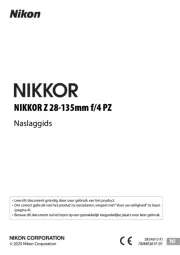
17 April 2025
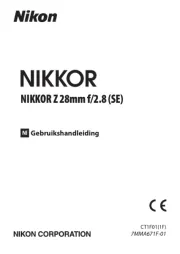
9 April 2025
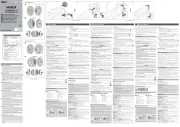
27 Maart 2025
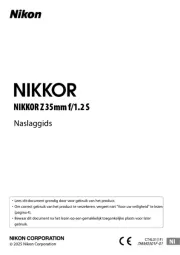
17 Maart 2025
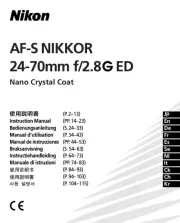
20 Februari 2025
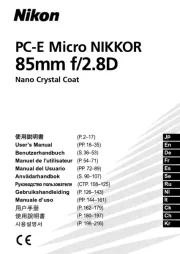
20 Februari 2025

8 December 2024
Handleiding Lens
- Laowa
- Celly
- Samsung
- Godox
- Axis
- Viltrox
- Voigtlander
- Irix
- Teradek
- Freelensing
- Astera
- Lensbaby
- Hanwha
- Computar
- Fujinon
Nieuwste handleidingen voor Lens
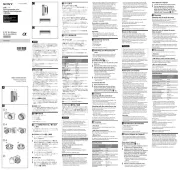
29 Juli 2025
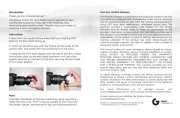
29 Juli 2025
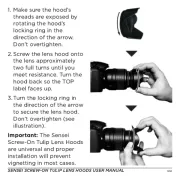
29 Juli 2025
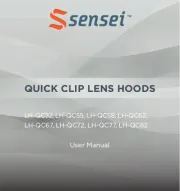
29 Juli 2025
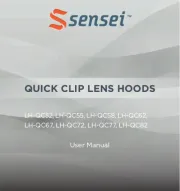
29 Juli 2025
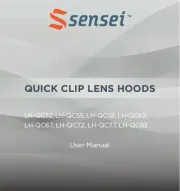
29 Juli 2025
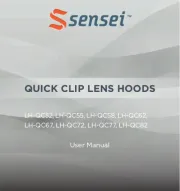
29 Juli 2025
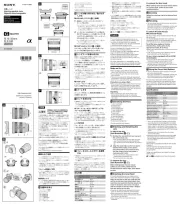
28 Juli 2025
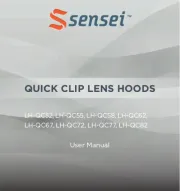
28 Juli 2025
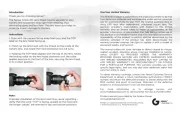
28 Juli 2025
